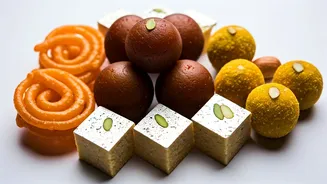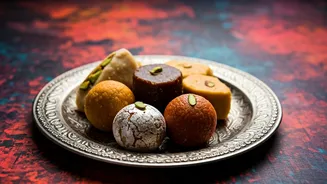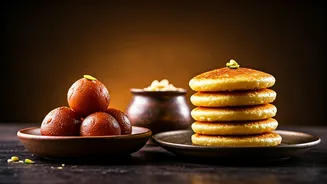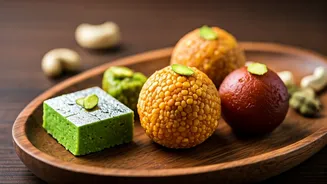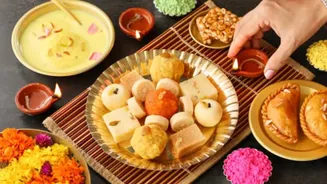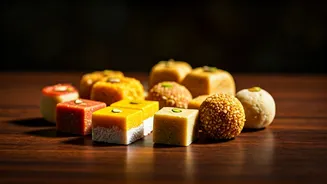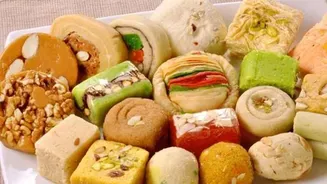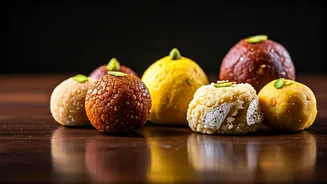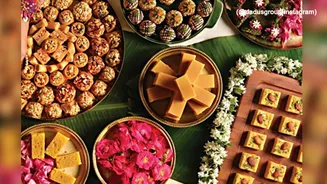Sweet Celebrations, Smart Choices
Diwali, the festival of lights, often features a dazzling array of sweets, but their impact on our health is a significant consideration. A nutritionist
took on the task of evaluating some favourite Indian Diwali mithai. The goal was simple: to help you make informed choices. This assessment provides insight into the nutritional content of the sweets, allowing you to enjoy the festivities without compromising your well-being. By understanding the composition of each sweet, individuals can make smart decisions during the festive season, balancing tradition with a focus on health. The evaluation includes popular choices, providing a comprehensive guide to navigate the sweet offerings of Diwali.
Gulab Jamun: A Treat?
Gulab Jamun, a classic, features prominently on Diwali sweet platters, but it's essential to understand its place in a balanced diet. The nutritionist's assessment likely flagged Gulab Jamun, suggesting mindful consumption is necessary. Gulab Jamun is typically prepared by deep-frying milk solids and then soaking them in a sugary syrup, increasing its calorie and sugar content. The deep-frying process adds to the fat content. While the taste is undeniably satisfying, moderation is key to avoid excessive sugar intake during the festive season. Enjoying it occasionally, combined with an understanding of its nutritional impact, is the recommended approach.
Jalebi: Crisp and Considered
Jalebi, another Diwali favourite, presents similar considerations as Gulab Jamun. The nutritionist highlighted it as a sweet to enjoy in moderation. The process involves deep-frying batter in intricate spirals and soaking them in sugar syrup. The high sugar and fat content is a primary concern. Individuals should be mindful of portion sizes. While the crispy, sweet taste is appealing, a careful approach to consumption is advisable, especially for those watching their sugar and calorie intake during the festive season. Balancing indulgence with health-conscious choices ensures one can still participate in the festivities without significant health concerns.
Moti Chur Laddu: Delightful Details
Moti Chur Laddu, a festive favorite, comes under the nutritionist's scrutiny. While specifics of the evaluation are unavailable from the source, it is highly likely the assessment involved consideration of the laddus' ingredients, including gram flour, sugar, and ghee. The caloric density and fat content are critical factors to consider. Portion control and frequency of consumption are key to enjoying Moti Chur Laddu as part of a balanced diet. The nutritionist's insight provides guidance on integrating this sweet into a Diwali celebration without excessive health impacts. It's about finding the balance.
Kaju Katli: A Nutty Angle
Kaju Katli, made from cashew nuts, likely received a slightly different evaluation from the nutritionist. While still a sweet treat, the presence of cashews provides a source of healthy fats. However, it’s still important to consider the sugar content. The nutritionist's recommendations likely suggested an awareness of portion sizes. Kaju Katli can be incorporated into your Diwali celebrations if it’s done mindfully. The evaluation balances the nutritional benefits with the need for moderation. The approach offers a way to enjoy the festive treats without compromising overall health goals.
Rasgulla: A Sweet Conclusion
Rasgulla, a Bengali sweet, is another Diwali treat evaluated by the nutritionist. The sweet typically contains paneer, sugar syrup, and has a relatively lower fat content compared to some other sweets. The assessment likely focused on the sugar content as the primary concern. Though the composition has some nutritional value, the advice might emphasize controlling portion sizes. Enjoying Rasgulla as part of a balanced Diwali treat selection requires an understanding of its ingredients and a commitment to moderation, allowing you to celebrate without excessive consumption of sugar.
